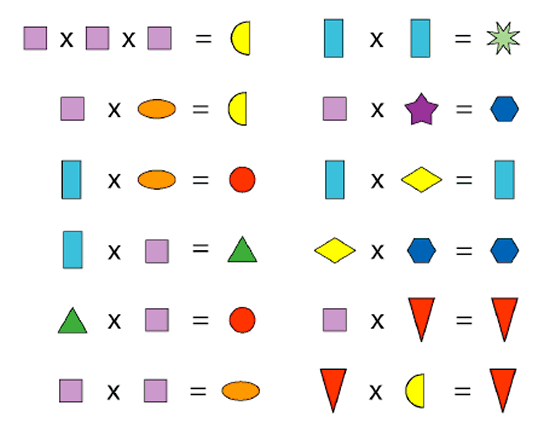Or search by topic
Number and algebra
Geometry and measure
Probability and statistics
Working mathematically
Advanced mathematics
For younger learners
Shape Times Shape



- Problem
- Getting Started
- Student Solutions
- Teachers' Resources
Shape Times Shape
Shape Times Shape printable sheet
The coloured shapes stand for eleven of the numbers from 0 to 12. Each shape is a different number.
Can you work out what they are from the multiplications below?

Click here for a poster of this problem.
You may be interested in the other problems in our Number Fluency Feature.
Why do this problem?
Possible approach
As you circulate, listen out for clear reasoning, based on learners' knowledge of number properties. You may wish to warn some pairs that you will be asking them to share their thinking with everyone later. It would be worth stopping everyone for a brief mini plenary before that if you notice some interesting and efficient ways to record.
Tamara Pearson, a teacher from Atlanta, US, wrote to us to say she had adapted this task and created her own version using Adinkra symbols. Thank you, Tamara.
Key questions
What does that tell us? How do we know?
Possible extension
Possible support
You may also like
Chocolate
There are three tables in a room with blocks of chocolate on each. Where would be the best place for each child in the class to sit if they came in one at a time?
Four Triangles Puzzle
Cut four triangles from a square as shown in the picture. How many different shapes can you make by fitting the four triangles back together?
Cut it Out
Can you dissect an equilateral triangle into 6 smaller ones? What number of smaller equilateral triangles is it NOT possible to dissect a larger equilateral triangle into?

